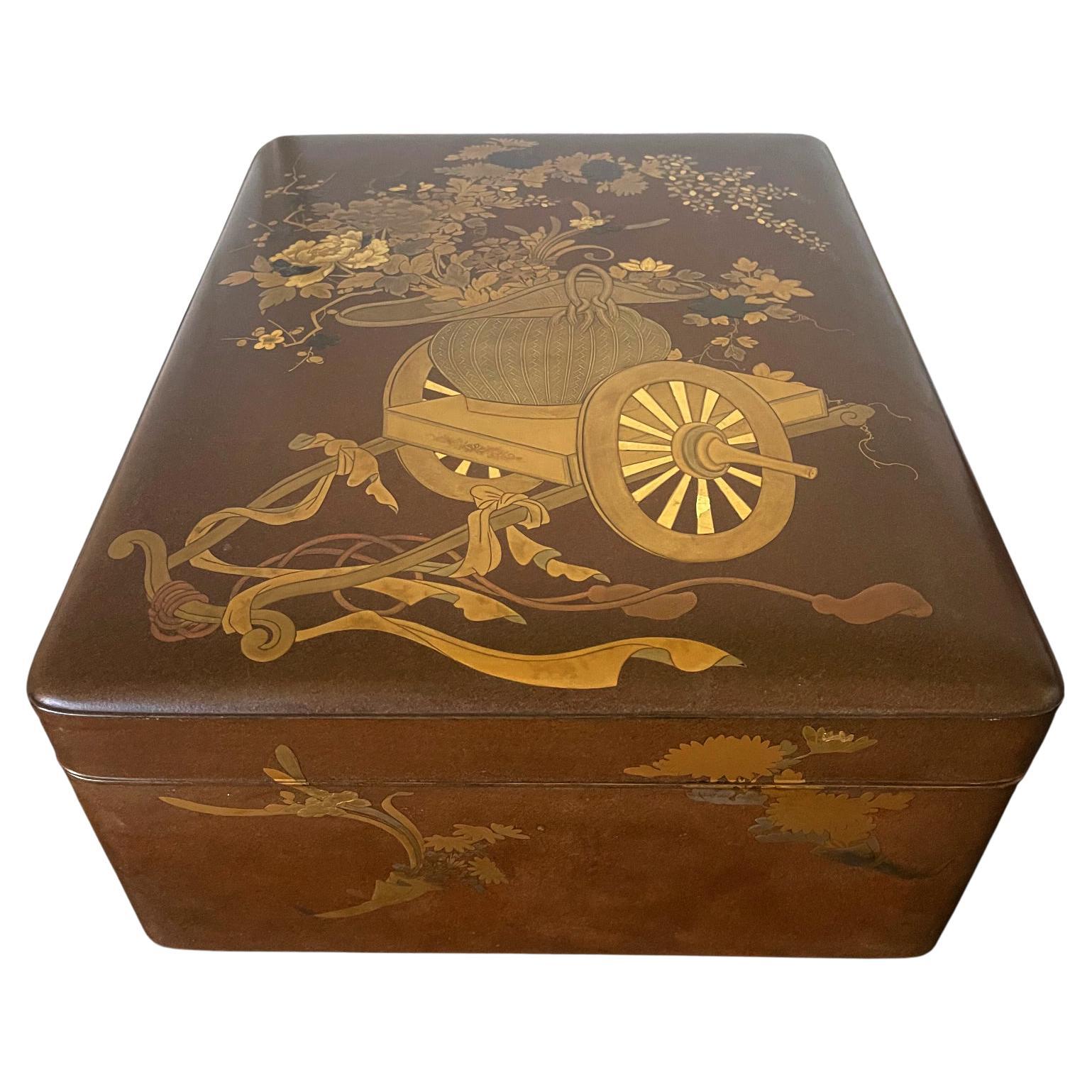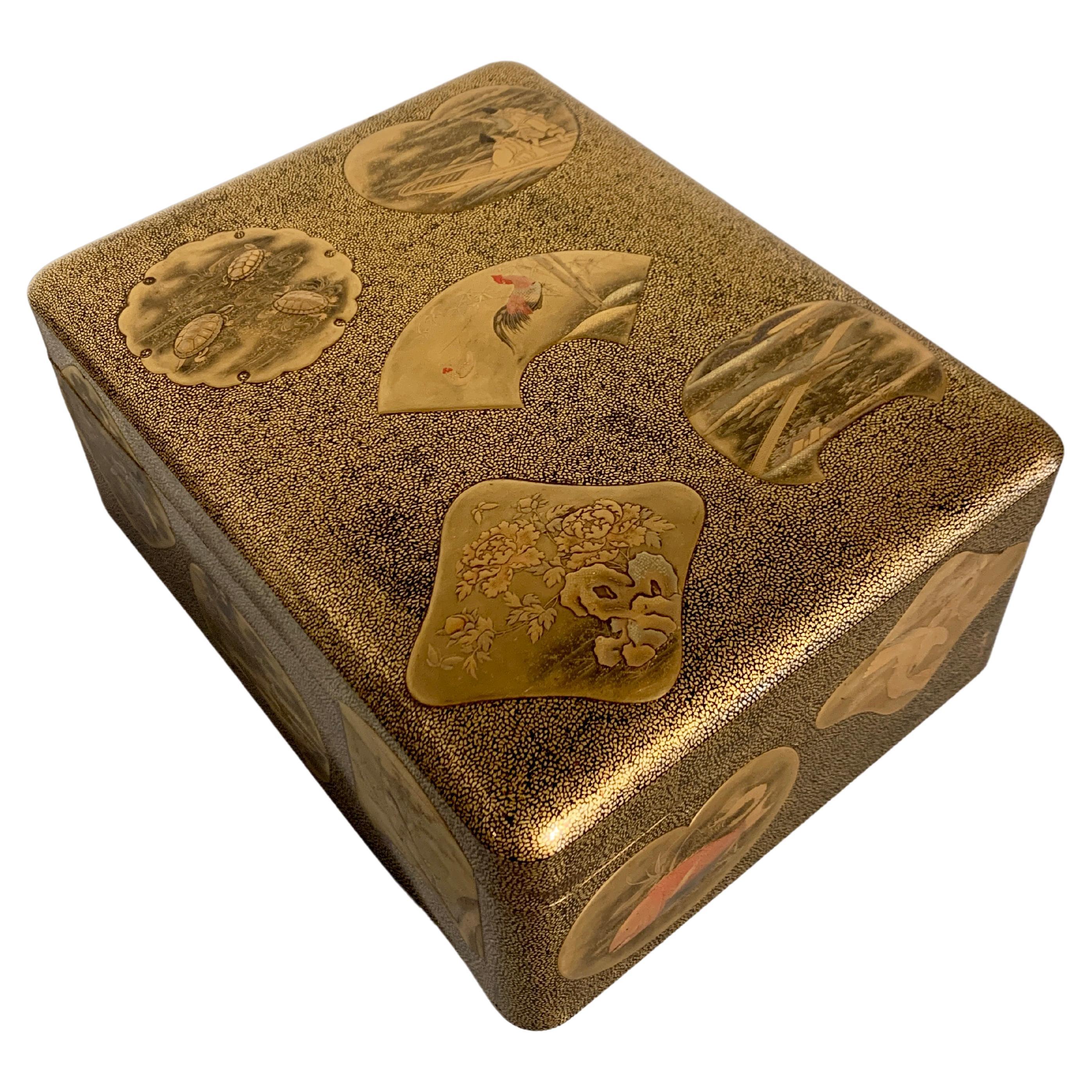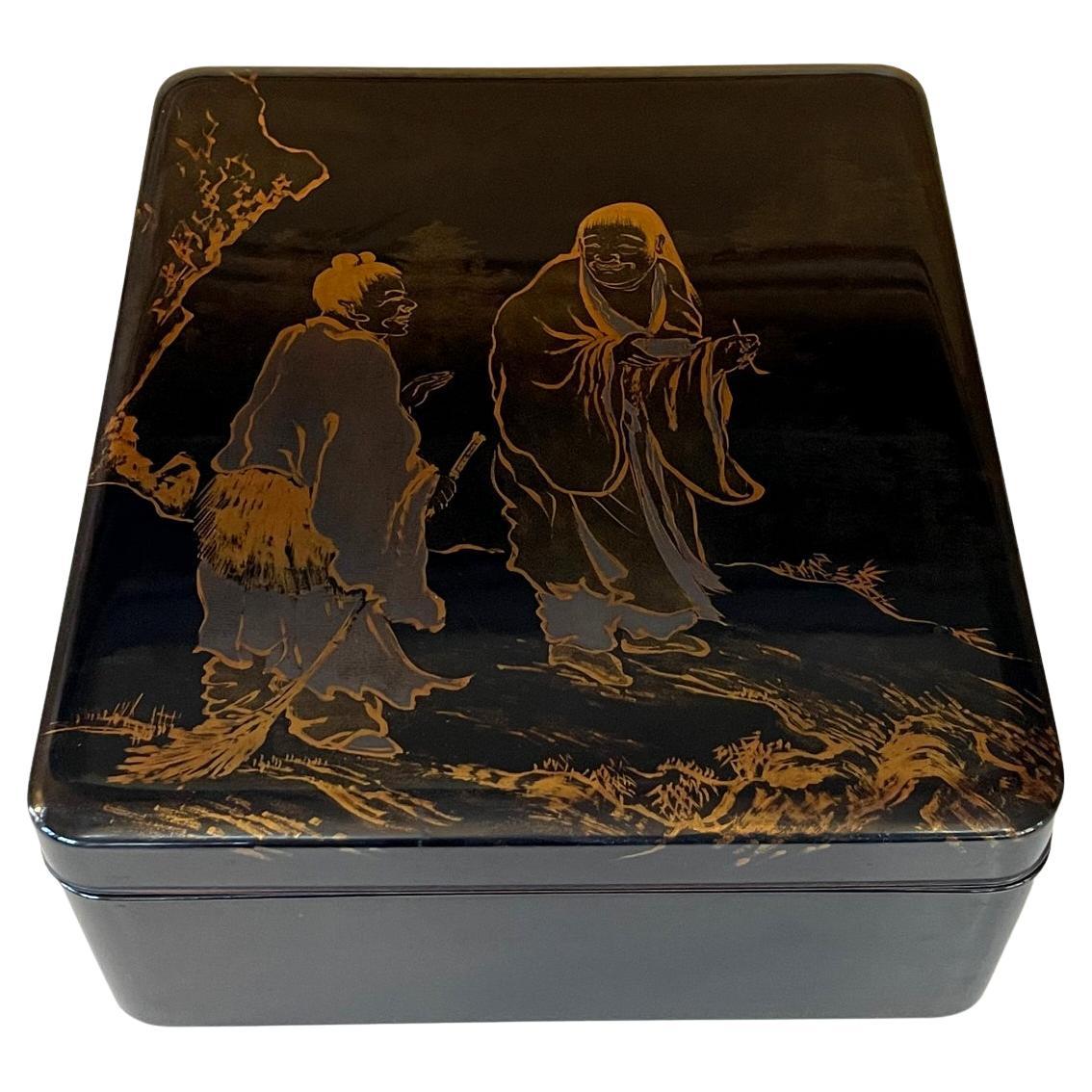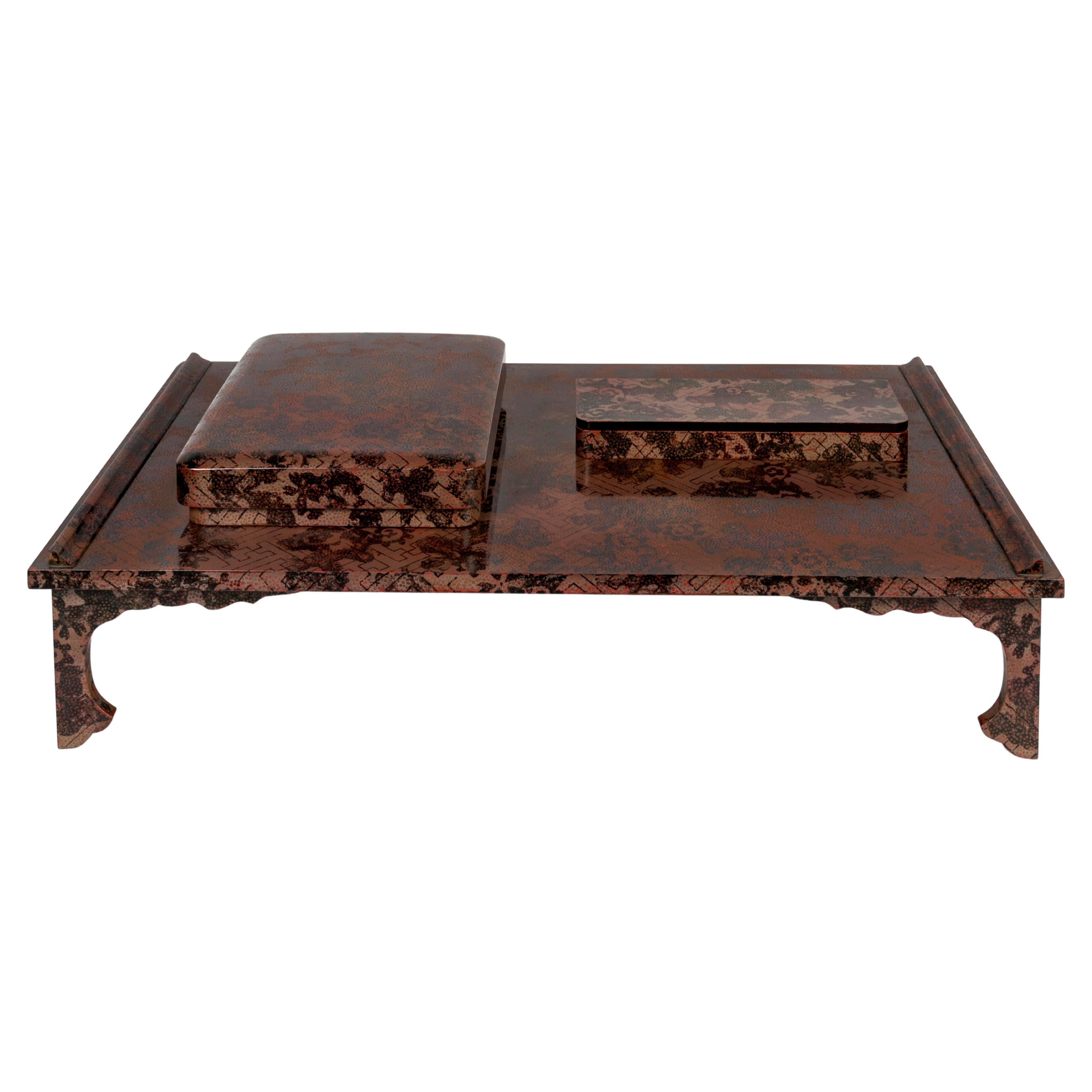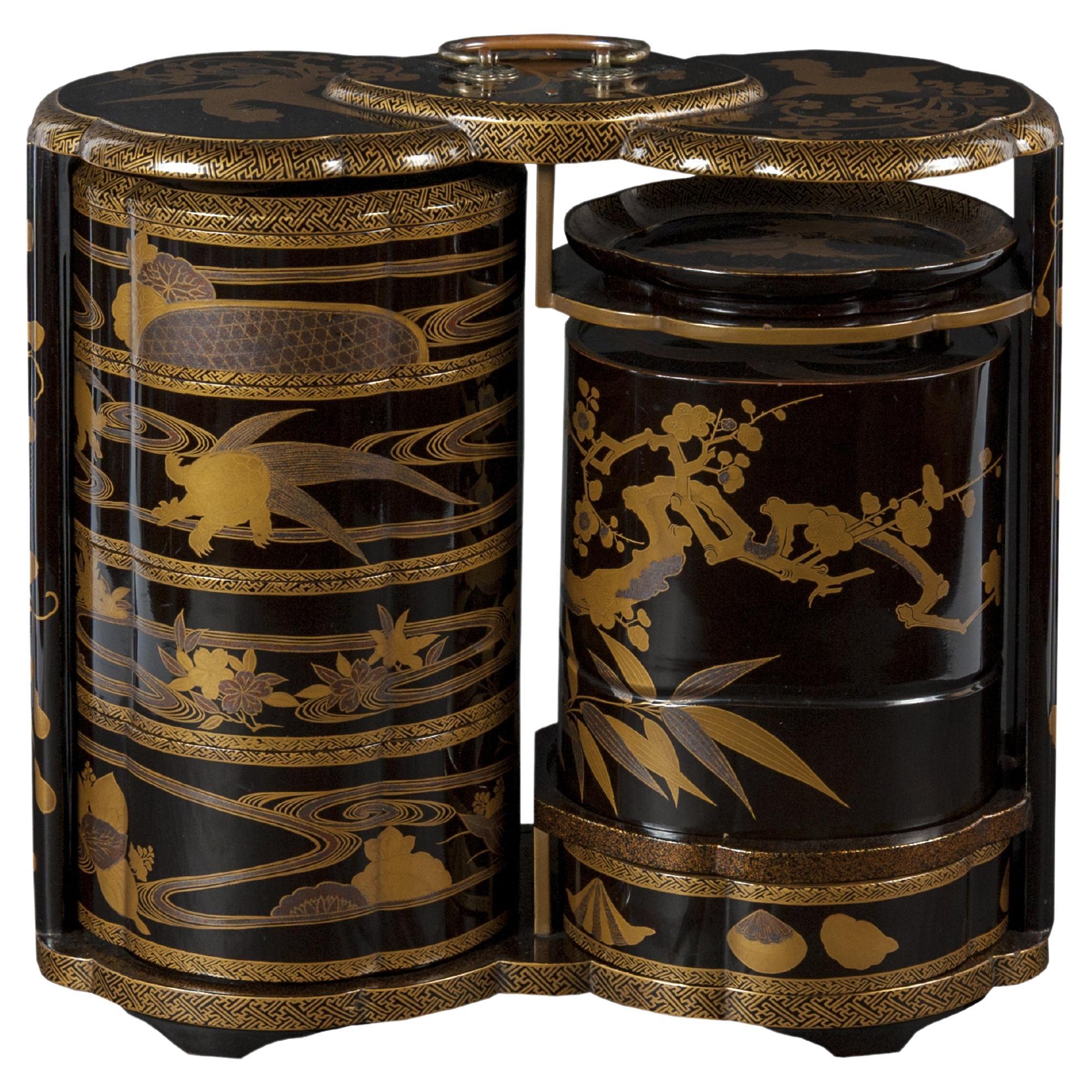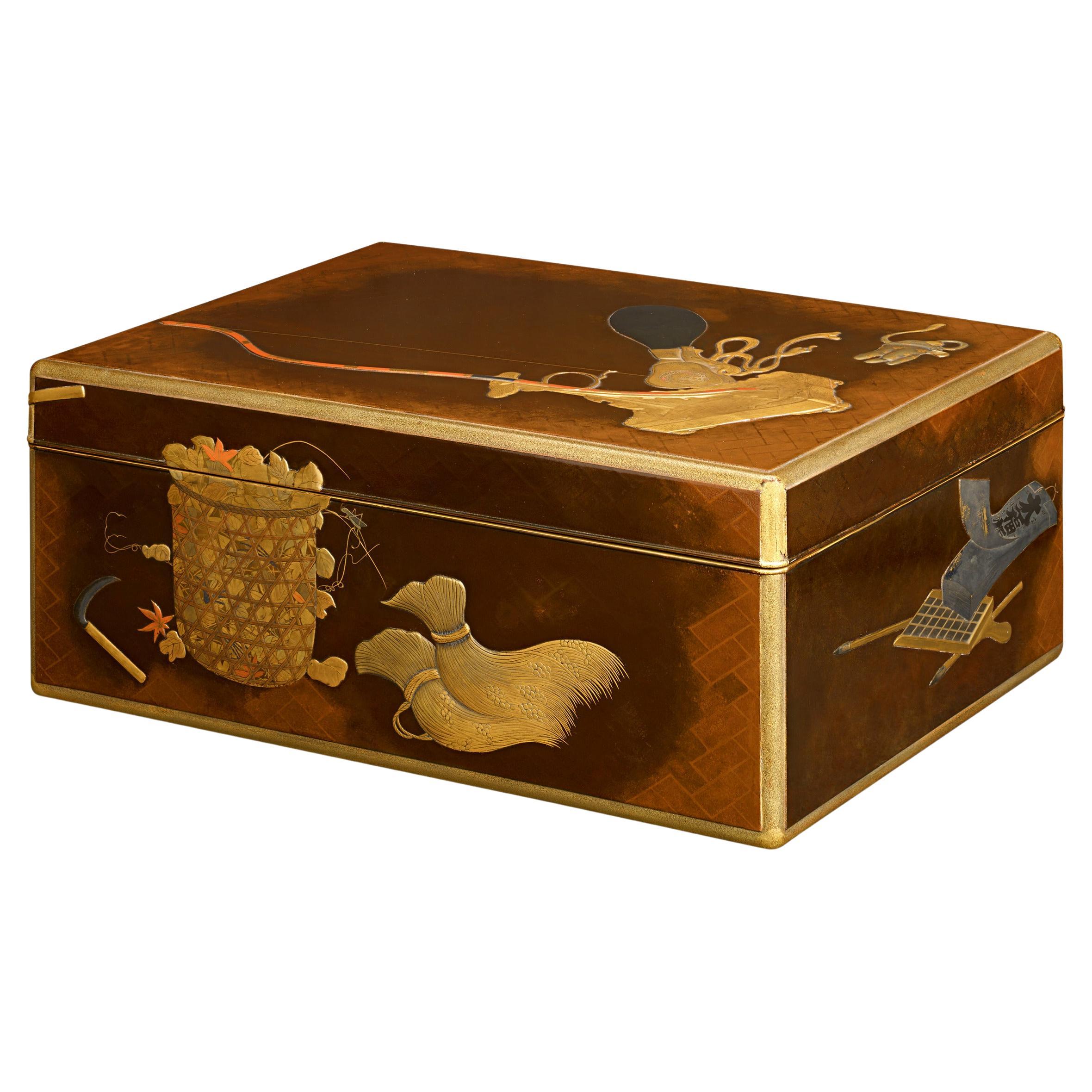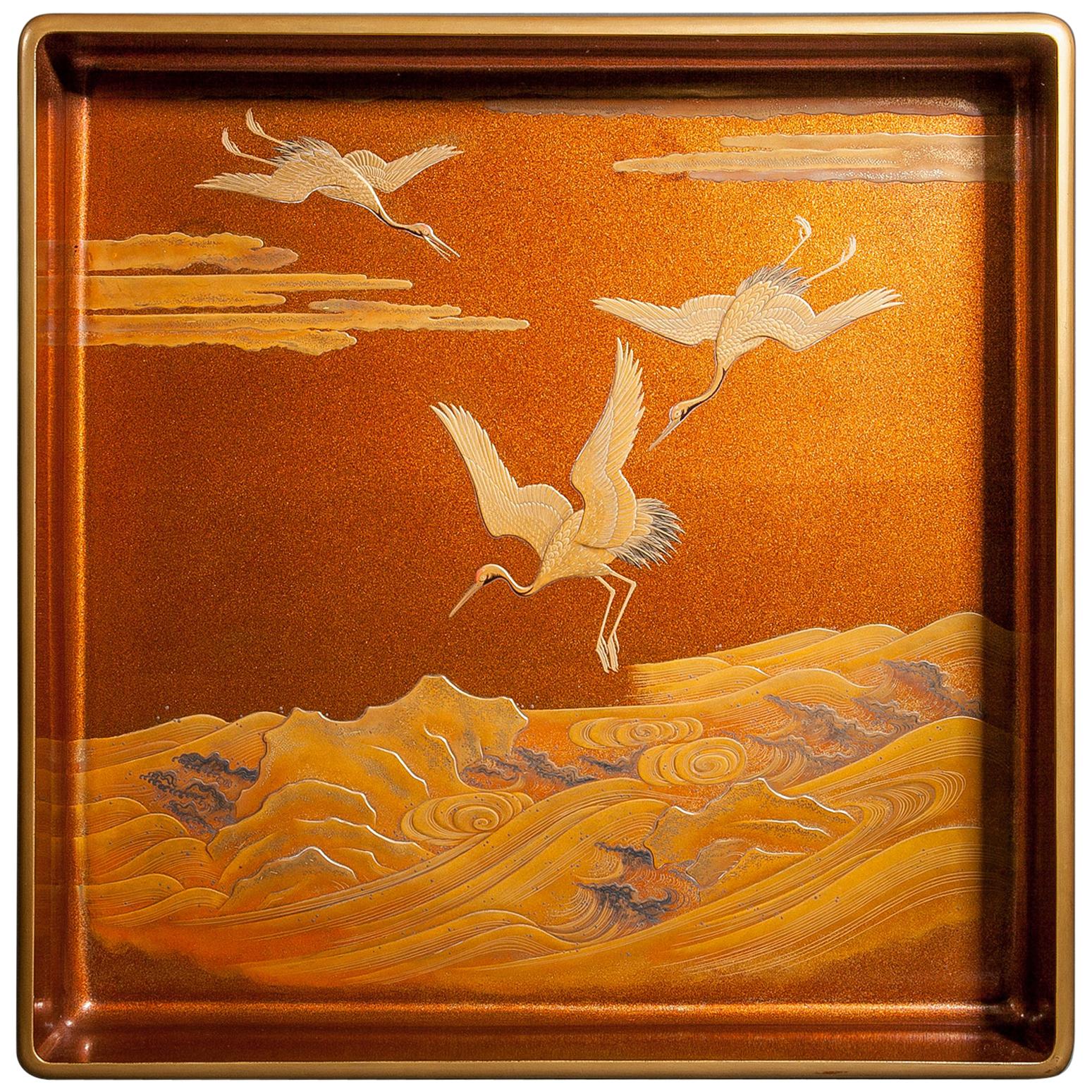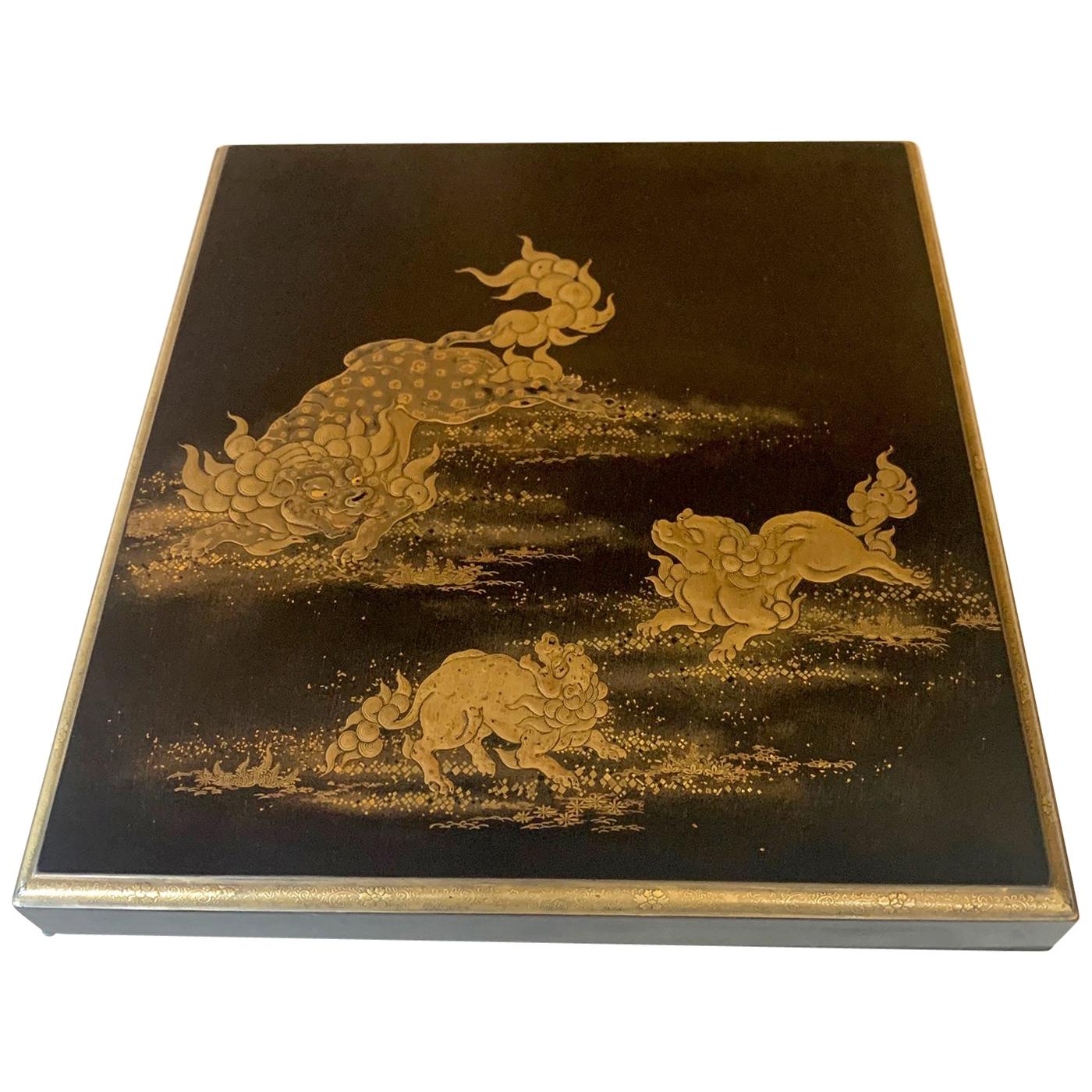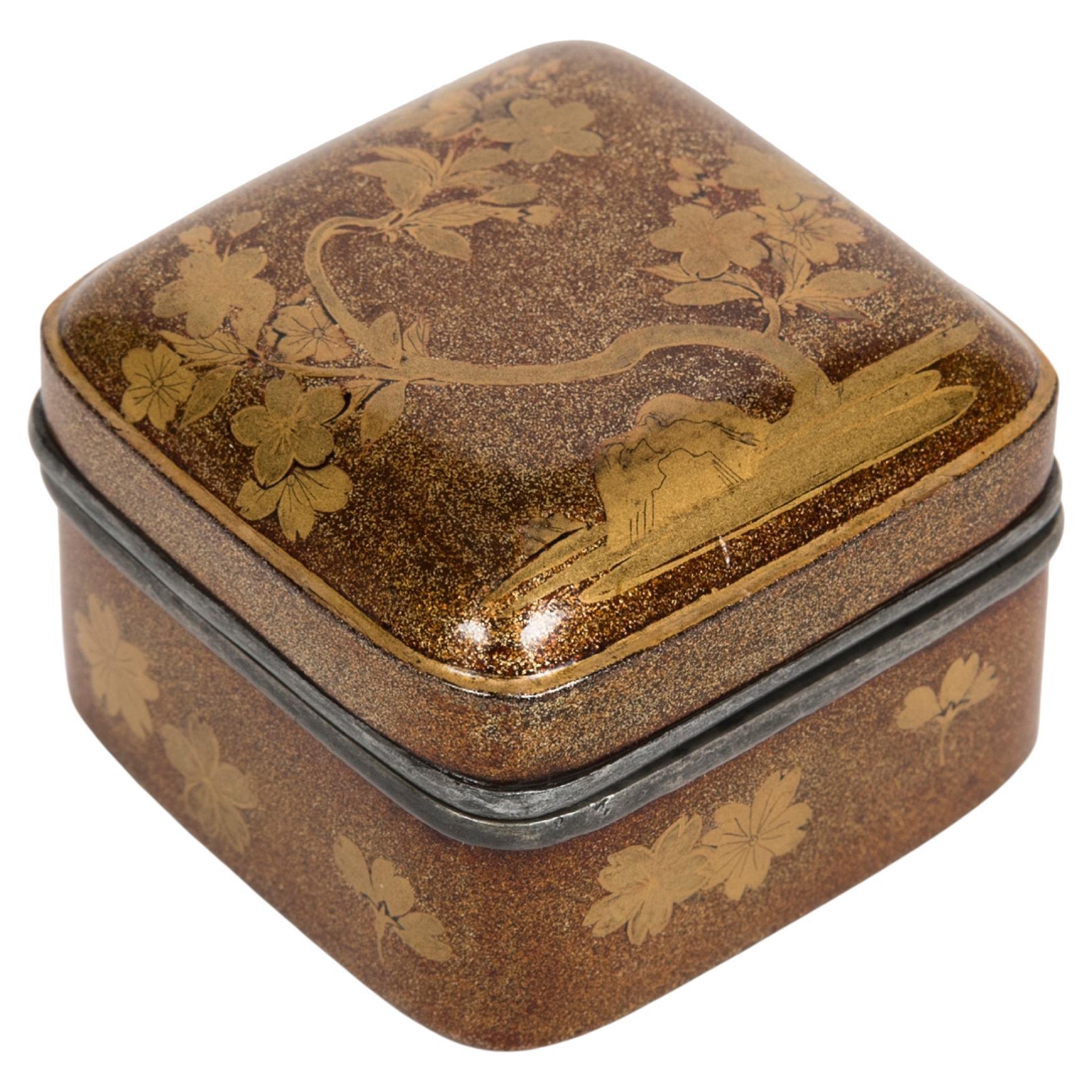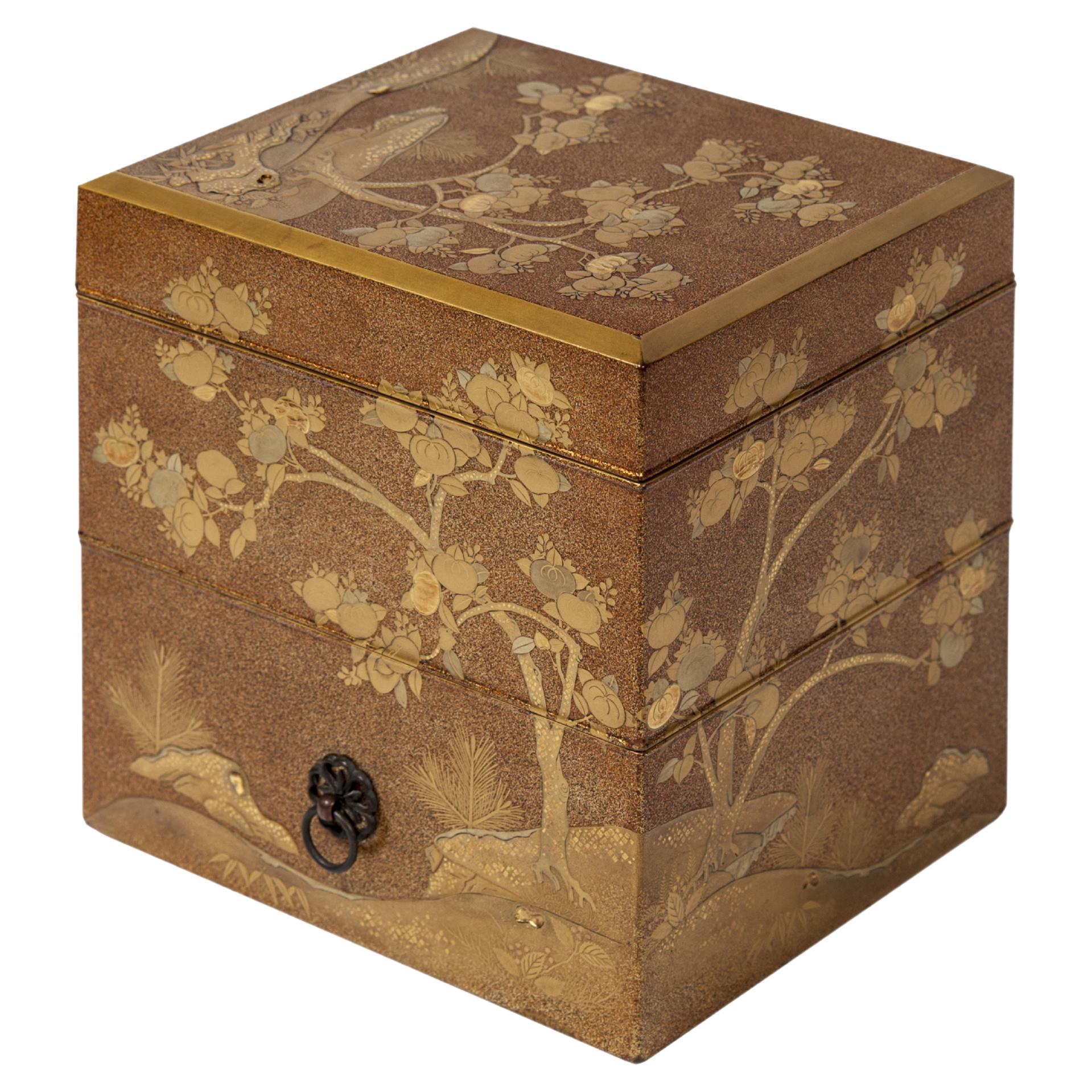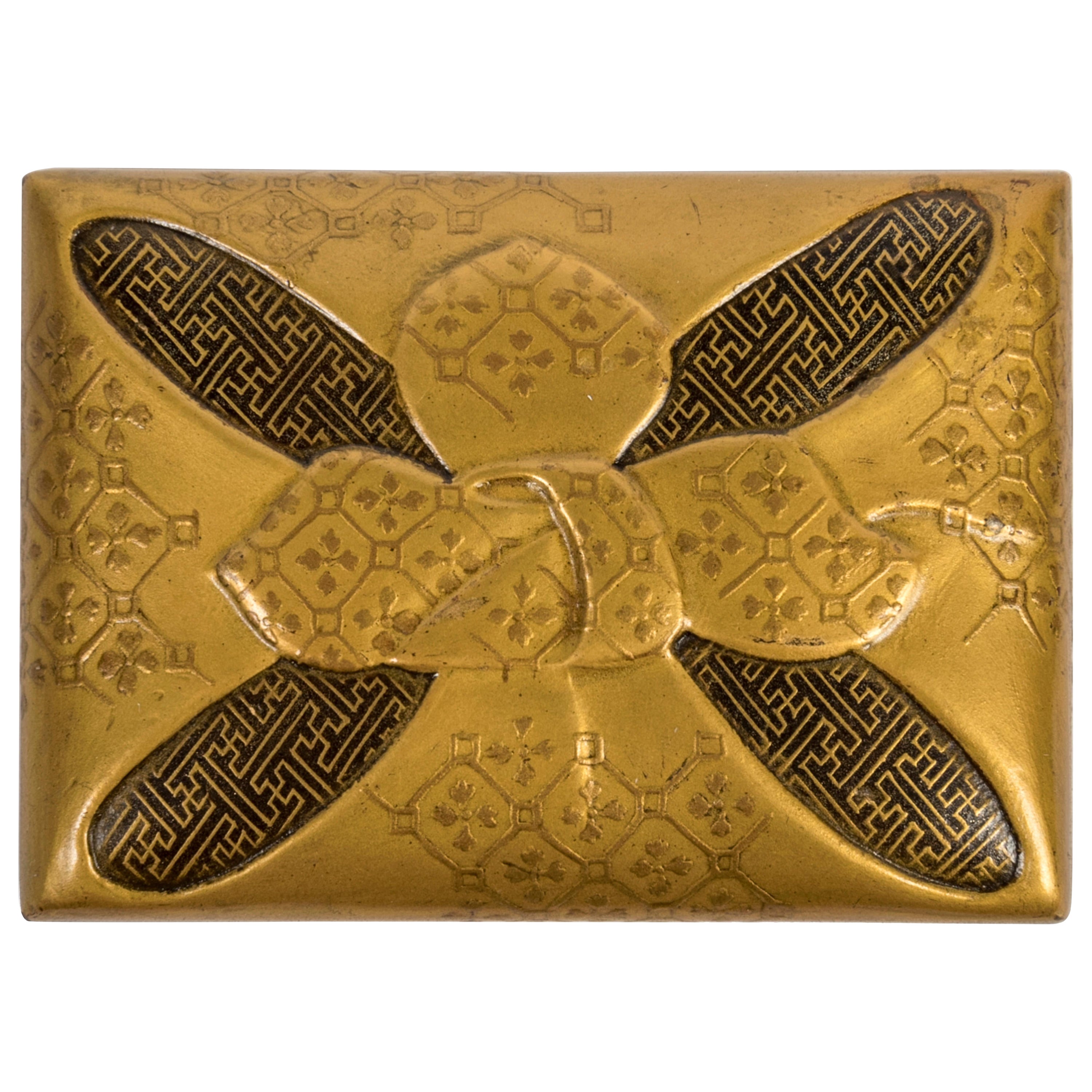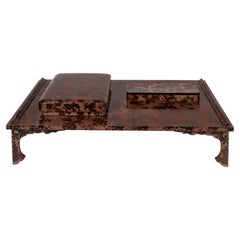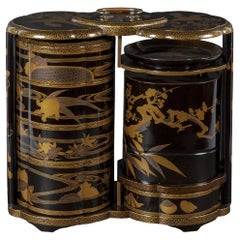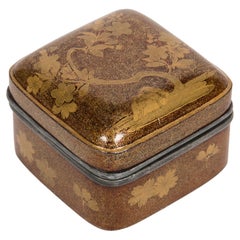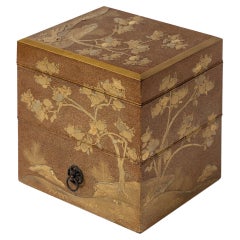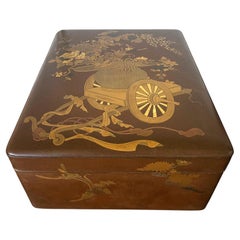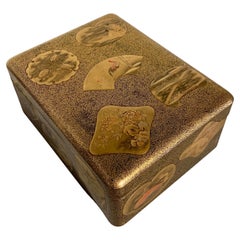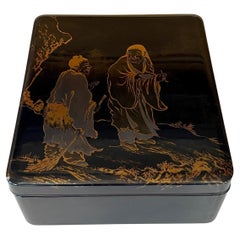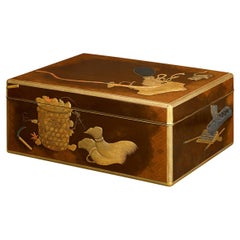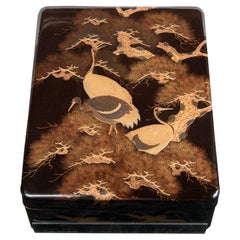
Fine Japanese Lacquer Cranes and Pine Trees Ryoshibako - Paper Box
View Similar Items
Want more images or videos?
Request additional images or videos from the seller
1 of 7
Fine Japanese Lacquer Cranes and Pine Trees Ryoshibako - Paper Box
$9,523.85List Price
About the Item
- Dimensions:Height: 5.12 in (13 cm)Width: 16.93 in (43 cm)Depth: 13 in (33 cm)
- Materials and Techniques:Lacquer,Lacquered
- Place of Origin:
- Period:
- Date of Manufacture:1868-1912
- Condition:Wear consistent with age and use.
- Seller Location:PARIS, FR
- Reference Number:Seller: 2017-4141stDibs: LU8311234267962
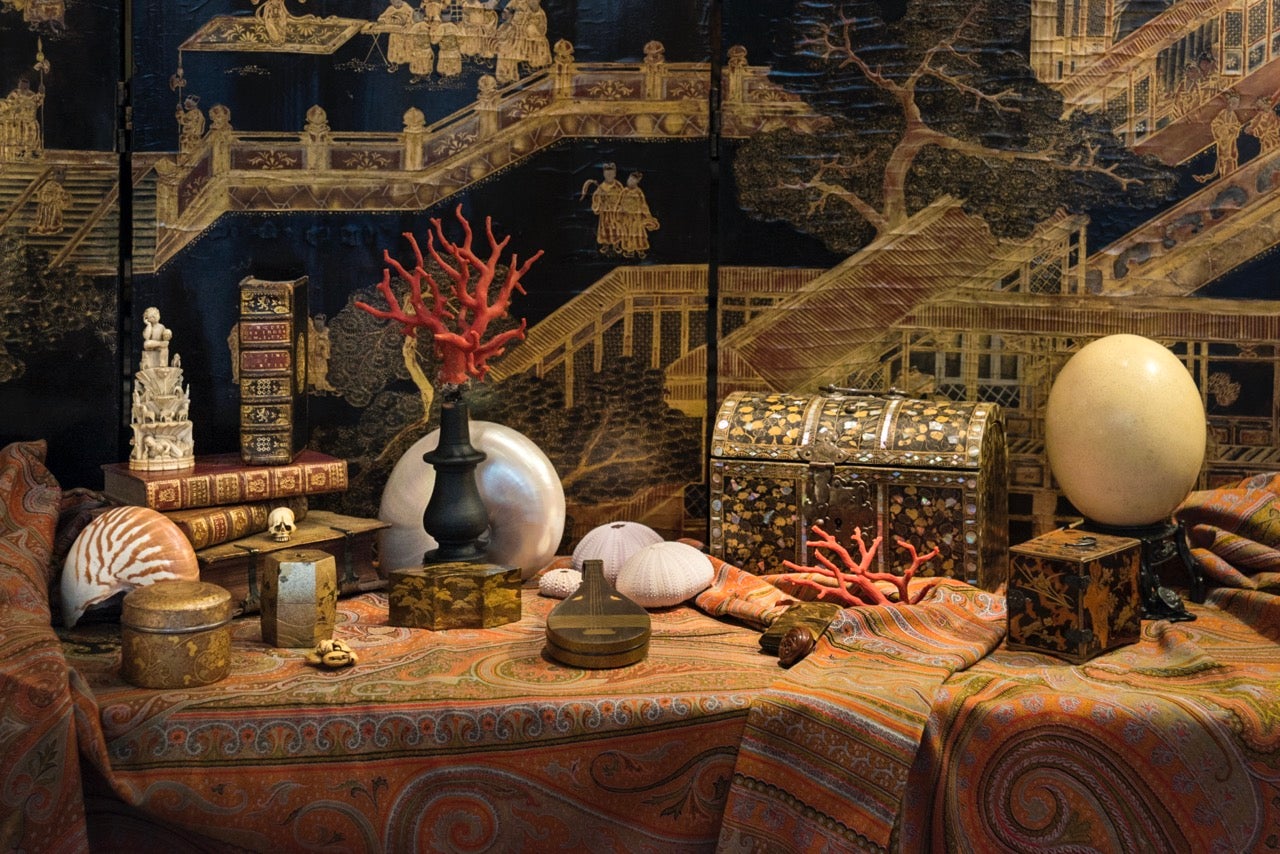
About the Seller
No Reviews Yet
Vetted Professional Seller
Every seller passes strict standards for authenticity and reliability
Established in 2013
1stDibs seller since 2023
Authenticity Guarantee
In the unlikely event there’s an issue with an item’s authenticity, contact us within 1 year for a full refund. DetailsMoney-Back Guarantee
If your item is not as described, is damaged in transit, or does not arrive, contact us within 7 days for a full refund. Details24-Hour Cancellation
You have a 24-hour grace period in which to reconsider your purchase, with no questions asked.Vetted Professional Sellers
Our world-class sellers must adhere to strict standards for service and quality, maintaining the integrity of our listings.Price-Match Guarantee
If you find that a seller listed the same item for a lower price elsewhere, we’ll match it.Trusted Global Delivery
Our best-in-class carrier network provides specialized shipping options worldwide, including custom delivery.More From This Seller
View AllJapanese writting set in waqasa lacquer including bundai ryoshibako and fudebako
Located in PARIS, FR
Set of bundai, ryōshibako and fudebako in wakasa lacquer with an old rose background and black traditional Japanese patterns.
The saya pattern (or sayagata) is composed by Chinese svastikas. This symbol linked to Buddhism, mean intelligence, power and peace. It is a good omen sign.
The kanoko pattern reminds stains on fawn back.
The sakura (cherry blossom) pattern is emblematic of Japan. The blossoming in a short time marks spring beginning and is a symbol of renewal and ephemeral beauty.
There are also traces of calligraphy brush, in reference to the function of the objects.
Bundai is a low table used to put books or scrolls and, later, to write.
Rectangular ryōshibako (letter and document box) with a slightly domed
Fudebako (pencil case) of rectangular format very narrow in its length with two rounded corners, flat cover.
Wakasa lacquerware...
Category
Early 20th Century Japanese Taisho Lacquer
Materials
Lacquer
Fine Japanese Black and Gold Lacquer Sageju-Bako - Picnic Box
Located in PARIS, FR
Black and gold lacquer sageju-bako (picnic box) decorated with floral motifs in hiramaki-e. It includes a sake bottle, a four-compartment box with nashi-ji lacquer inside, a simple tray and a hollow tray. At the top, there is a bronze handle for transport.
The sageju-bako is divided into four superimposed boxes for food on the left; a simple tray, a sake bottle and a hollow tray on the right. They are in the shape of a plum blossom.
On the top, on both sides a phoenix. The phoenix (hôo) has an imperial and solar symbolism. This auspicious bird also embodies virtues taken from the teachings of Confucius (such as goodness, righteousness and wisdom).
The left boxes are patterned with turtles, plum tree, bamboo, cherry blossoms, water plantains near rivers. The two trays on the right have a shell and seaweed pattern. The sake bottle is decorated with a plum tree and bamboo.
On the sides, calabash decoration. Borders in saya (or sayagata) pattern, composed of Chinese swastikas...
Category
Antique Early 19th Century Japanese Lacquer
Materials
Lacquer
Japanese lacquered Cherry Tree Kobako
Located in PARIS, FR
Kobako in nashiji lacquer of square shape with a hira maki-e décor of a blossoming
cherry tree. Both of the four sides are adorned with golden lacquer cherry flowers,
represented i...
Category
Antique 19th Century Japanese Lacquer
Materials
Lacquer
Japanese Lacquered Tebako 'Box'
Located in PARIS, FR
Tebako box with three compartments in golden and nashi-ji lacquer, decorated with golden, red, and kirigane lacquer, golden persimmon tree leaves, among rocks. The compartments are of increasing size from the top. The decoration is in continuity.
Persimmon has been cultivated in southern China for more than 2500 years and is believed to have been introduced to Japan in the 8th century. The veneer is a tree with very hard wood, similar to ebony. According to a legend, one specimen survived the atomic bombing of Nagasaki on August 9, 1945, close to the epicenter. It is therefore in Japan a symbol of strength and longevity. It is also the national fruit of the country. It is eaten as a traditional dish during New Year's Day celebrations.
Tebako literally means "portable box...
Category
Antique 1860s Japanese Lacquer
Materials
Lacquer
Japanese Lacquered Furoshiki Kobako 'Box'
Located in PARIS, FR
Rectangular and flat lacquer Kobako (small box) representing a furoshiki knot seen from above. Fundame background, furoshiki in takamaki-e with floral pattern, inside the folds of the fabric with black and gold sayagata pattern with togidashi maki-e technique. The saya (or sayagata) pattern is composed of Chinese swastikas...
Category
Antique Late 19th Century Japanese Lacquer
Materials
Lacquer
Japanese Lacquered Natsume 'Tea Box'
Located in PARIS, FR
Natsume in dark red lacquer, decorated with autumn leaves and cherry blossoms in hiramaki-e and nashiji. Interior in black lacquer.
Maple leaves (Momiji) are celebrated in literatur...
Category
Mid-20th Century Japanese Lacquer
Materials
Lacquer
You May Also Like
Japanese Lacquer Ryoshibako Document Box Meiji Period
Located in Atlanta, GA
A large Japanese lacquer box with elaborate Maki-e design from Meiji period, (mid-late 19th century). The generous size of the box was reser...
Category
Antique 19th Century Japanese Japonisme Lacquer
Materials
Wood, Lacquer
Large Japanese Lacquer Document Box, Ryoshibako, Edo/Meiji period, Japan
Located in Austin, TX
A large and magnificently decorated Japanese lacquer document box, ryoshibako, signed Umeboshi/Baikyo, late Edo or early Meiji Period, mid 19th century, Japan.
The large document box, ryoshibako, of tall, rectangular shape with rounded corners, and fitted with an inrobuta (flush-fitting) cover with beveled edges. The exterior of this exquisite box is decorated all over with fifteen different raised reserves shaped as uchiwa (paddle) fans against a lush and intricate krikane ground imitating shagreen.
The uchiwa shaped reserves all of takamaki-e, and exquisitely painted with designs of animals, flowers, and landscapes in silver, gold, maki-e, hiramaki-e, and takamaki-e, with kirikane, nashiji, and polychrome embellishments, upon gold lacquer fudame grounds.
The interior of the lid is nothing short of spectacular, featuring a large design of a magnificent and beautifully detailed rooster and hen with chicks gathered around a lazy stream. Large stalks of chrysanthemum bloom behind them. All against an ethereal nashiji ground.
The cover of the box features five reserves:
1. Three minogame (turtles with long tails), symbolizing longevity
2. "Narihira Crossing the Sumida" from The Tales of Ise...
Category
Antique 1860s Japanese Meiji Lacquer
Materials
Softwood, Lacquer
Japanese Lacquer Maki-E Tiered Suzuribako and Ryoshibako
Located in Atlanta, GA
A Japanese roiro lacquer scholar combo box with an upper tier of inkstone box (Suzuribako) and a lower document box (Ryoshibako) circa 1910-30s (end of Meiji to Showa period). The high glossy box was beautifully decorated with an image of the famously eccentric Buddhist monks Hanshan and Shide (known in Japan as Kanzan and Jittoku). Often as a pair, they have been a popular motif in Japanese Zen painting...
Category
Vintage 1920s Japanese Meiji Lacquer
Materials
Stone, Metal
Japanese Lacquer Box
Located in New Orleans, LA
This exquisite Meiji-period lacquer document box known as a ryoshibako showcases the meticulous artistry of maki-e, a technique of raised lacquer decoration. Adorned with gold and vi...
Category
Antique 19th Century Asian Meiji Lacquer
Materials
Gold
$39,850
Japanese Nashiji Lacquer Tray with Crane and Wave Design
Located in Hudson, NY
Japanese Nashiji lacquer tray with crane and wave design, this exquisite tray is a masterful example of multiple lacquer techniques using gold (including maki-e and takamaki-e). This...
Category
Antique Late 19th Century Japanese Meiji Lacquer
Materials
Gold
Japanese Lacquer Box with Fine Maki-e Decoration Meiji Period
Located in Atlanta, GA
A lacquered wood box with lid from Japan circa 19th century Meiji Period. The finely decorated box was used to store paper slips and small documents on the desk. It is overall finished with black lacquer (kuro) with sparse Mura-Nashiji effect outside and on the top surface of the lid, there are three Komainu, (sometimes known as Shishi or Japanese lions) frolicking and forming a circle in lively motion. Komainu are auspicious animals in Japanese cultures in both Shinto and Buddhism tradition. Originally from China, these animals symbolizes guardians to ward off evil spirits. Hiramaki-e was used in combination with carving and combing to render the lions with various surface textures. A gilt border with an slight angle was given to the lid and even the thin band is decorated with miniature floral scrolls. The interior of the box was finished in a dense nashiji. Underneath the lid, a cluster of peonies open lavishly by two gentle mounts. Takamaki-e (high relief) in both gold and silver were...
Category
Antique Late 19th Century Japanese Japonisme Lacquer
Materials
Wood, Lacquer
Recently Viewed
View AllMore Ways To Browse
Japanese Tree Bark
Black Coral Branches
Black Lacquer Trunk
Japanned Tray On Stand
Japanese Lacquered Trunk
Antique Japanese Tray
Antique Asian Mother Of Pearl Furniture
Japanese Wood Tray
Japanese Wood Inlay
Red Lacquer Boxes Asian
Japanese Lacquered Tray
Asian Black And Gold Decoration
Chinese Cinnabar
Maki E
Chinese Cinnabar Furniture
Antique Cinnabar
Urushi Lacquer
Cinnabar Lacquer Furniture
